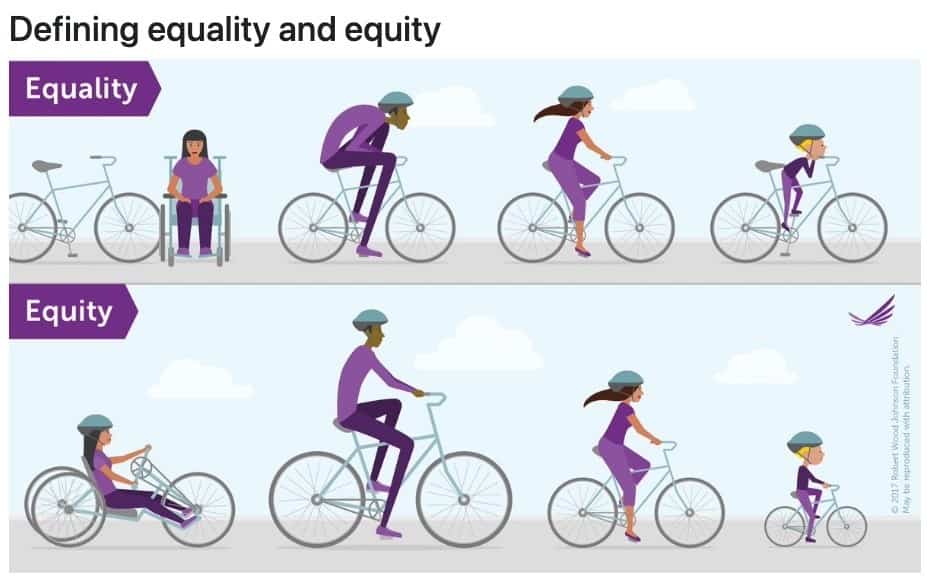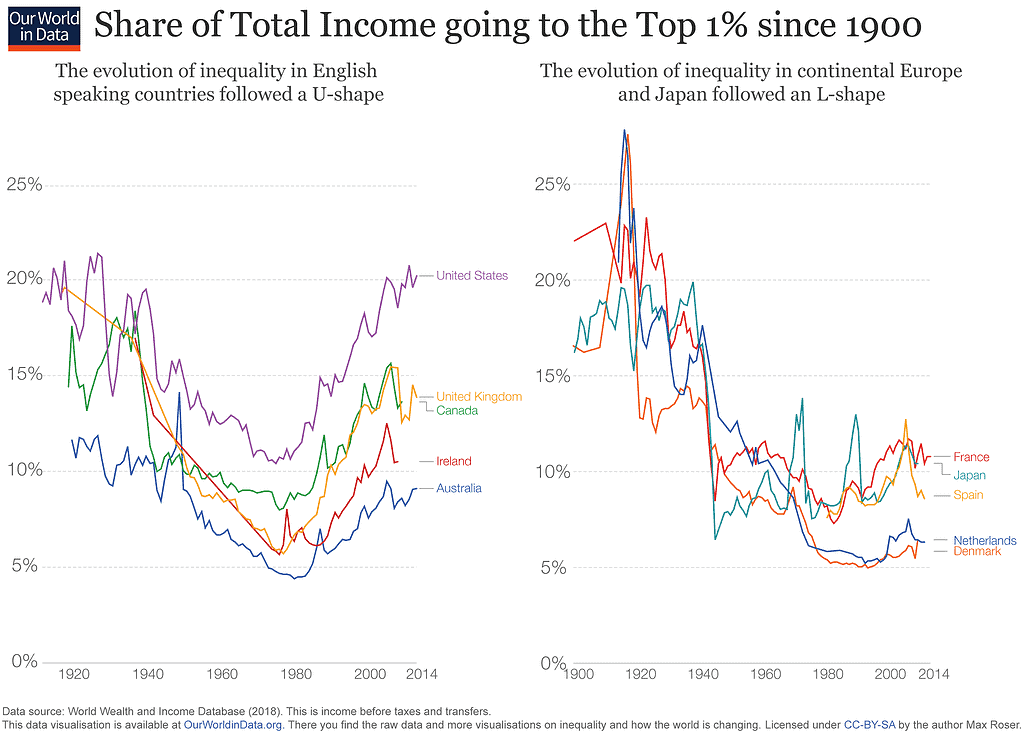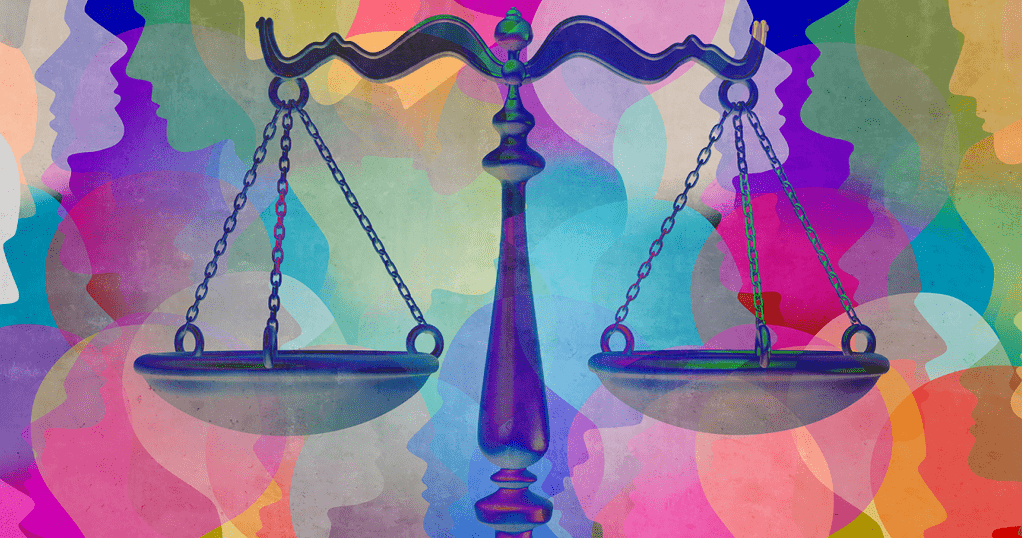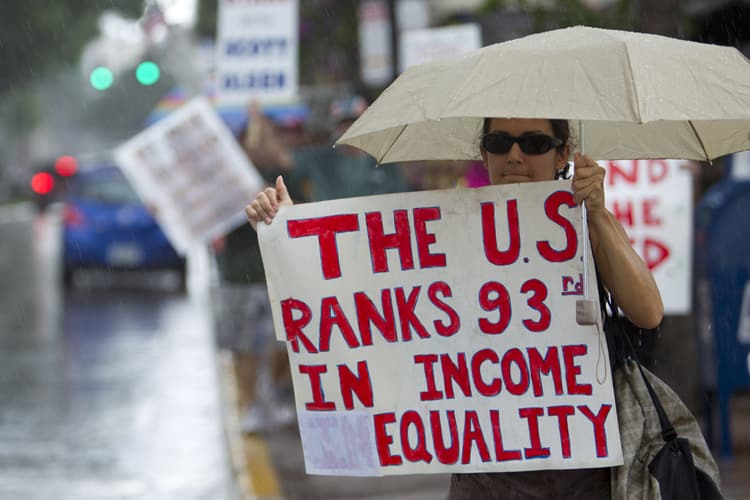
In a world where the rich seem to get richer and the poor seem to get poorer, the words “equity” and “inequality” get thrown around a lot.
You may have come across these terms in news articles, social media posts, or discussions with friends and family. But what do these terms really mean, and why are they so important?
In simple terms, equity refers to the principle of fairness and justice, which recognizes that each person has different circumstances so they may need different resources and opportunities to reach an equal outcome.
In contrast, equality refers to the equal distribution of resources, opportunities, and benefits in a society, regardless of background or circumstances
Imagine you and your friend are tasked with picking apples from a tree. You’re both given the same basket, and your friend is tall and athletic, while you’re short and not as physically capable. You’re told to pick as many apples as you can within an hour, and whoever picks more apples wins a prize.
This scenario illustrates equality, where both you and your friend are given equal resources to achieve the same goal. But is it fair? Probably not. Your friend has an inherent advantage, which means the playing field isn’t level.
Now, imagine you’re given a bigger basket and more time to pick apples. This extra support allows you to compete with your friend on equal footing. This scenario represents equity, where resources are distributed based on individual needs to level the playing field.
Equity vs. Equality: Definitions and Differences

At its core, equity refers to fairness and justice. It involves ensuring that everyone has access to the resources and opportunities they need to achieve their goals, regardless of their background, identity, or circumstances.
Equality, on the other hand, is about sameness and impartiality. It’s the idea that every person should be treated the same, regardless of their differences.
In practice, equality can take many different forms. For example, in the workplace, equality might involve paying all employees the same wage for the same job, regardless of their race, gender, or other characteristics. In education, equality might involve providing the same resources and opportunities to all students, regardless of their socioeconomic background.
While equality aims to treat everyone the same, it doesn’t account for the fact that people have different needs, abilities, and circumstances. This means that without additional support or resources, some people may not have the same opportunities to succeed as others.
Equity, on the other hand, acknowledges and addresses these differences by providing additional support or resources to those who need them. It’s about creating a level playing field where everyone has the chance to succeed, regardless of their starting point.
“The idea of “equal protection of law” is essentially constitutionalizing and encoding the idea that the law must formally treat all persons the same, irrespective of their race, gender, or other identity or status. That’s what the framers of the 14th Amendment appear to have meant in the Equal Protection Clause, which states that no state can “deny to any person within its jurisdiction the equal protection of the laws,” said Stephen Menendian, Assistant Director and Director of Research at the Othering & Belonging Institute, where he supervises many of the Institute’s research projects and ongoing initiatives.
“At some point, however, feminists, disability rights advocates, and racial justice advocates (among others) realized that merely treating people the same, in some circumstances, can result in unfairness. In some cases, special accommodations or differential treatment may be required to achieve fairness and justice. This is where the idea of equity comes in,” the expert added.
Or as researchers Mary Guy and Sean McCandless put it in their 2015 essay Social Equity: Its Legacy, Its Promise:
“To be clear, “equity” and “equality” are terms that are often used interchangeably, and to a large extent, they have similar meanings. The difference is one of nuance: while equality can be converted into a mathematical measure in which equal parts are identical in size or number, equity is a more flexible measure allowing for equivalency while not demanding sameness.”
| Equity | Equality |
|---|---|
| Addresses the root causes of disparities | Treats everyone the same regardless of their circumstances |
| Provides additional support or resources to level the playing field | Assumes that everyone starts from the same place |
| Takes into account historical and systemic disadvantages | Ignores historical and systemic disadvantages |
| Acknowledges and values diversity | Assumes that everyone is the same |
| Focuses on fairness and justice | Focuses on sameness and uniformity |
| Recognizes that different people may need different things to succeed | Assumes that everyone has the same needs |
| Requires a deliberate effort to address barriers | Assumes that everyone has equal access to opportunities and resources |
| Aims to create a more equitable society for all | Aims to treat everyone equally regardless of their circumstances |
The Importance of Equity
Equity is essential for creating a fair and just society. When everyone has genuine access to the same opportunities, they can reach their full potential and contribute to society in meaningful ways, experts say.
Unfortunately, our society isn’t always equitable. In many cases, certain groups of people face systemic barriers that prevent them from accessing the same opportunities and resources as others. These barriers can be based on factors such as race, gender, sexual orientation, ability, and socioeconomic status.
For example, a person of color may face discrimination in the workplace or have limited access to healthcare due to systemic racism. A person with a disability may struggle to find accessible housing or employment due to ableism. A person from a low-income family may have limited access to educational opportunities due to socioeconomic status.
By addressing these systemic barriers and working towards equity, we can create a society where everyone has the opportunity to succeed and thrive.
Do we live in a fair world?

Although great progress has been made in making the world a fairer and more just place, there is still a lot of work to do.
Around 16% of the global population – 1.3 billion – live with a disability, according to the World Health Organization. This makes people with disabilities the world’s largest minority.
Around 80% of these people with a disability live in developing countries, where poverty and disability are often very deeply interconnected. However, people with disabilities still face many barriers that prevent them from accessing the same rights and benefits as the rest of the able-bodied society.
Even though you might live in a free country with equal rights for all, this is not enough to tackle existing inequalities, some of which have been ranging on for centuries. Take, for instance, the case of gender inequality.
Even though women in industrialized nations can vote, start a business, and theoretically embark on any endeavor they so choose, the reality is that in many cases there are still systemic barriers that put may put them at a disadvantage compared to men.
On a global scale, gender inequality is still a huge problem. In 20 22, the global gender gap has been closed by 68.1%. At this rate, it would take us another 130 years to close the gender gap, in terms of economic participation and opportunity, educational attainment, health and survival, and political empowerment.
Clean water is a fundamental necessity for all humans, yet access to it remains a privilege for the affluent. In July 2010, the United Nations General Assembly adopted Resolution 64/292, which recognized a “human right to water and sanitation.” It declared water “essential” for the realization of all human rights. This historic resolution was supported by every member state, marking a global consensus on the significance of clean water.
Despite this international acknowledgment, comprehensive progress on clean water access has been slow. According to a 2019 report by the World Health Organization (WHO) on water inequalities, one in three people worldwide lacks access to safe drinking water. Even more strikingly, 3 billion people do not have hand-washing facilities – a basic sanitation need. This situation disproportionately affects vulnerable communities such as those with low-income levels.
There are many more instances that highlight inequity one way or the other, but listing them all would take just too much space and is beyond the scope of this article.
Achieving Equity

Achieving equity requires a deliberate and intentional effort to address the systemic barriers that prevent certain groups of people from accessing the same opportunities and resources as others.
This can involve policies and initiatives that target specific groups of people who have historically been marginalized or oppressed. For example, affirmative action programs that prioritize hiring or admissions for underrepresented groups can help address systemic racism and increase diversity and inclusion.
It can also involve broader initiatives that aim to create a more equitable society for all. For example, policies that address income inequality, provide affordable healthcare and housing and ensure access to quality education can help redress the balance and give everyone a chance to succeed.
Examples of Addressing Equity and Equality
To better understand the difference between equity and equality, let’s look at a few examples.
Example 1: Education
In the United States, the education system is often criticized for its lack of equity. Students from low-income families or marginalized communities often don’t have the same access to quality education as their peers from more affluent backgrounds.
To address this, some schools and districts have implemented equity initiatives. For example, some schools have provided laptops or internet access to students who don’t have them at home, so they can participate in online learning during the COVID-19 pandemic. Other initiatives may provide tutoring or other academic support to students who need it.
Example 2: Healthcare
Access to healthcare is another area where equity is critical. In many countries, people from marginalized communities may not have the same access to healthcare as others. For example, people living in poverty may not be able to afford healthcare or have limited access to medical facilities in their area.
To address this, some countries have implemented policies to increase healthcare equity. For example, some countries have implemented universal healthcare systems that provide access to healthcare services for everyone, regardless of their income or socioeconomic status. Other initiatives may involve increasing funding for public health clinics or providing free or low-cost healthcare services to underserved communities.
Example 3: Workplace
The workplace is another area where equity is absolutely essential. In many industries, certain groups of people may face discrimination or bias that prevents them from advancing in their careers or receiving equal pay. For example, women and people of color may be paid less than their male or white counterparts, even if they have the same qualifications and experience.
To address this, some companies and organizations have implemented equity initiatives. For example, some companies have implemented pay equity policies that ensure employees are paid fairly based on their qualifications and experience, regardless of their gender or race. Other initiatives may involve diversity and inclusion training or the creation of employee resource groups that support underrepresented groups.
How Social Inequality and Inequity are shaping society
Social inequality is a pervasive issue that affects people all around the world, and it can manifest itself in various forms. These include:
- Wealth inequality: People with higher net worth have greater access to resources.
- Income inequality: Wage differential between CEOs and workers has spiked in recent decades.
- Access to basic education: Wealthier neighborhoods have better primary schools.
- Access to higher education: Geographical and financial barriers can limit access to higher education.
- Age inequality: Discrimination against people based on their age occurs in relation to access to employment for those over the age of 50.
- Deprived neighborhoods: Whole areas can be affected by the unequal distribution of rights and resources.
- Housing inequality: Living in social housing is related to being at the bottom of the social hierarchy.
- Racial inequality: Access to rights has not been distributed equally across people of different races.
- Gender inequality: Women tend to earn less than men for the same jobs.
- Health access inequality: Rural-urban divide and class divide can limit access to quality healthcare.
- Caste systems: Traditional caste societies deny access to jobs based on your ascribed status at birth.
- Citizenship status: Non-citizens may be denied human rights in a society.
- Child poverty: People born into poverty can experience malnutrition, poorer educational results, and lower overall lifetime earnings.
- Power and status inequality: People who are privileged on the social hierarchy have higher social status and consequently have more access to people in powerful political and corporate positions.
- LGBT discrimination: LGBT people have historically faced discrimination that has affected their ability to do many things heterosexual people can access.
- Incarceration rates: People of color are more likely to be imprisoned if they are caught committing a crime.
The Dangers of Inequality

Inequality is a pervasive issue that affects every aspect of our society. From economic inequality to social inequality, the consequences of these disparities can be far-reaching and severe. Here are some of the key dangers of inequality:
1. Poverty and Economic Insecurity
One of the most obvious dangers of inequality is poverty and economic insecurity. When there is a wide gap between the rich and poor, those at the bottom of the economic ladder may struggle to meet their basic needs, such as food, housing, and healthcare. This can lead to a host of negative outcomes, including poor health, limited educational opportunities, and lower life expectancy.
In addition, economic inequality can create a sense of hopelessness and despair among those who are struggling to get by. This can lead to social unrest and other negative consequences.
2. Health Disparities
Inequality can also have a significant impact on health outcomes. Studies have shown that individuals who live in poverty or who are otherwise marginalized may have poorer health outcomes than those who are more privileged. This can be due to a variety of factors, such as limited access to healthcare, unhealthy living conditions, and exposure to environmental toxins.
In addition, the stress and uncertainty that can come with living in poverty can take a toll on mental health, leading to conditions such as anxiety and depression.
3. Social Fragmentation
Inequality can also lead to social fragmentation and division. When there is a wide gap between the haves and have-nots, it can create a sense of “us versus them” that can be difficult to overcome.
In addition, economic inequality can lead to social stratification and segregation, as people from different income levels may be less likely to interact with one another. This can further exacerbate social tensions and make it more difficult to build a sense of community and shared purpose.
4. Political Instability
Finally, inequality can also lead to political instability. When large segments of the population feel that their voices are not being heard or that their needs are being ignored, it can create a sense of disillusionment and mistrust in the political system. This can lead to social unrest, protests, and other forms of political disruption.
In addition, economic inequality can create a power imbalance, with those who are wealthy and influential wielding disproportionate influence over the political system. This can lead to policies that further entrench inequality and limit opportunities for those who are less privileged.
Key takeaways
While equity and equality may seem similar, they have different meanings and implications. Equality is about treating everyone the same, while equity is about providing additional support or resources to level the playing field for those who need it.
Achieving equity requires a deliberate and intentional effort to address the systemic barriers that prevent certain groups of people from accessing the same opportunities and resources as others.
By working towards equity — not just equality — we can create a fair and just society where everyone has the opportunity to reach their full potential and contribute to society in meaningful ways.


